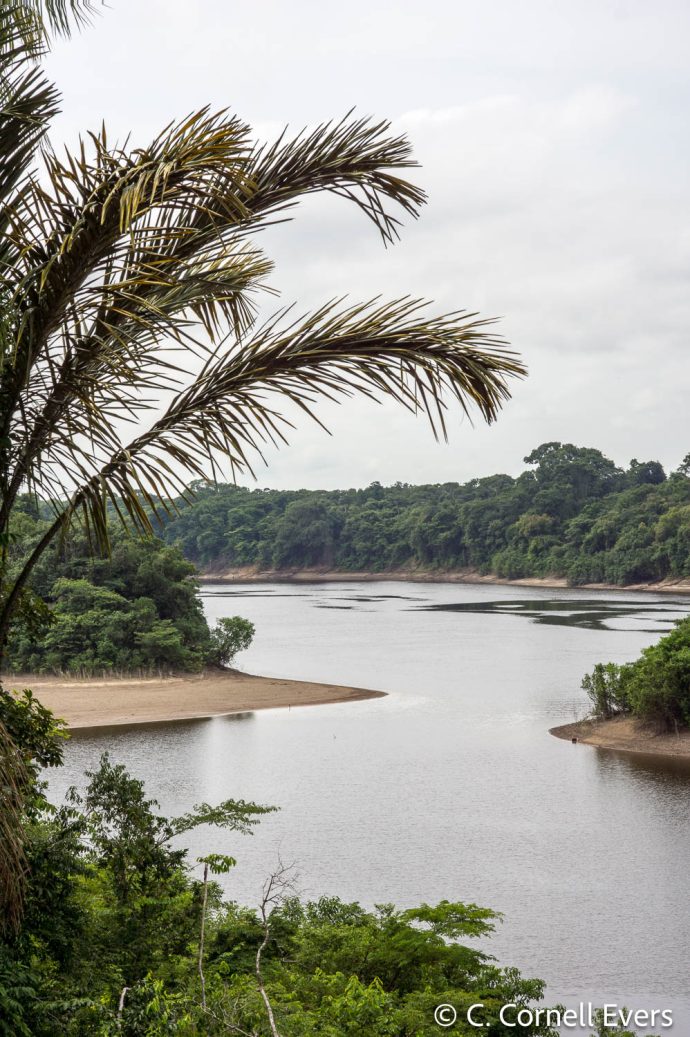Anavilhanas Archipelago, October 1993
Just before the confluence with the Solimões River, slightly south of Manaus, the Rio Negro branches off into a labyrinth of side channels and lagoons. In this area, Raimundo Rocha da Silva, seventy years old, purchased a large piece of deforested land a few years ago, intending to give the rainforest that once grew there a chance to fully return.
He greets me warmly as I step out of the canoe I have paddled to his land. He has a clear look in his eyes, and though he is small, he appears remarkably strong. The features of his face point to a mixed heritage, usually referred to here as ‘caboclo’.
Caboclos are descendants of immigrants who cohabited with indigenous women. Many of them are ribeirinhos, river dwellers. They build their houses on stilts due to the rising water in the flood forests, hundreds of thousands of square kilometers of land that is annually submerged. They plant their food just like the indigenous residents and for that, just like the indigenous residents, they burn small patches of forest. They know, just like the indigenous residents, how to use wild plants as food and medicine.
“The caboclos are the natural scientists of the forest,” says Raimundo as he boils river water to make coffee. “We know from our own experiences, and from the knowledge passed down from generations before us, what is good for ourselves and for the environment in which we live. My parents taught me that humans should only take from nature what they truly need. A principle that has served as a guideline throughout my life.”
Raimundo’s father was a rubber tapper. “He never destroyed nature. If my father asked my brother and me to catch a tambaqui, we would take the canoe out and catch one, sometimes two, but only the very big ones. A tambaqui was about a meter twenty long back then. Then came a time when people killed all the fish they caught, even the very small specimens. And in vast numbers. That was the end of the tambaqui. The same for pirarucu. A big pirarucu easily weighed eighty, ninety kilos. That was the normal weight. Try to find such a big pirarucu these days. People nowadays use nets in which all sizes of fish are caught, from which they take the big ones to sell and leave the rest on the beach.”
The population in the Amazon region is growing rapidly. I ask him how it is possible to feed all these mouths, give everyone a decent existence, and still live in harmony with nature. After all, he has seen the population grow and with it the tension between human needs and the well-being of nature. “There is a way. What I want is to plant seeds, thus giving the jungle a new chance. I want to cultivate palm fruits. Those attract birds. Coconut, pineapple. But also timber, for the people here in the surroundings. And rubber trees. There’s a theory that says once the rainforest has been burned down, nothing can grow anymore. I don’t believe in that. If you manage to plant trees that can survive on this soil, the rest will eventually return as well.”
To be continued…

